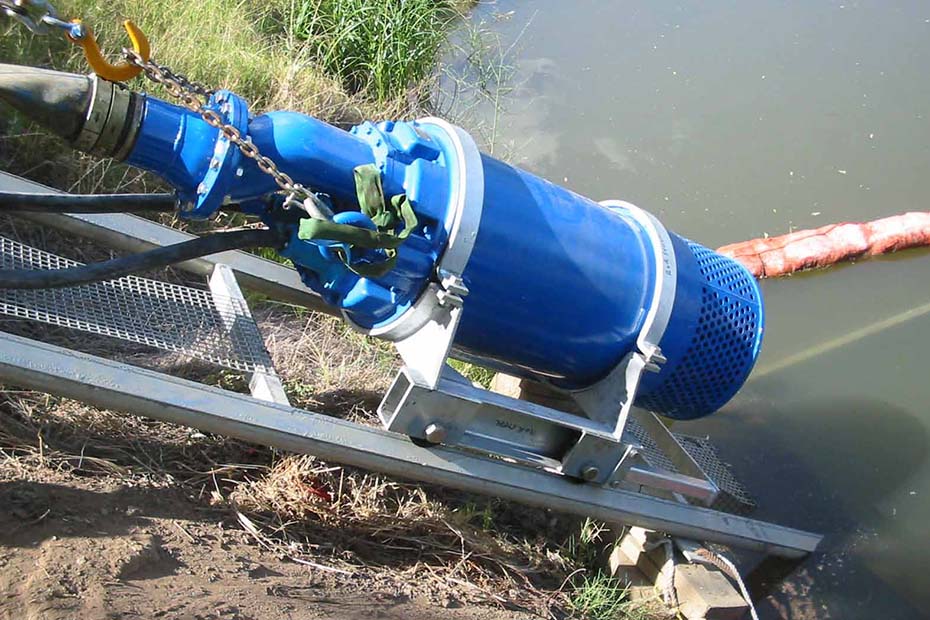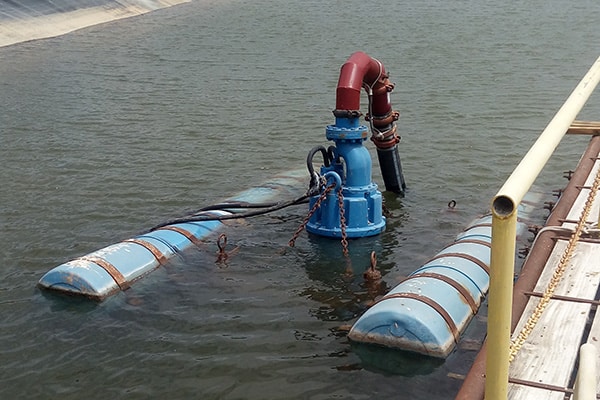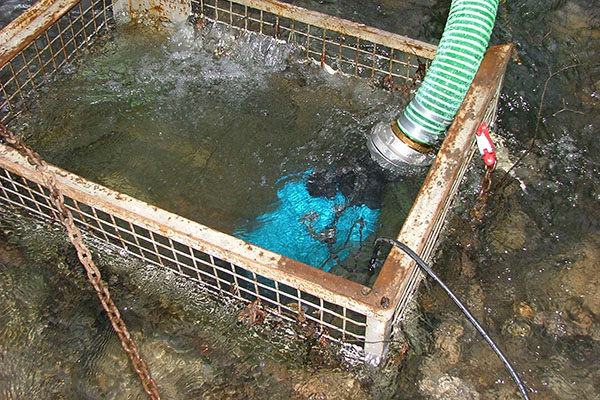
When it comes to selecting a submersible pump, making the right choice is crucial for ensuring efficiency, reliability, and longevity. Whether you’re managing an industrial facility or operating a mine site, the right pump can make all the difference.
In this blog, we’ll guide you through seven essential tips on how to choose a submersible pump that perfectly suits your needs. Our objective is to help you save time, money, and potential headaches down the line.
Each industry involves different fluids, environments, and operating conditions that require pumps made from different materials. Below is a guide to the ideal pump materials for each industry.
Stainless Steel: This material is highly resistant to corrosion, making it ideal for handling clean water and ensuring the water remains uncontaminated. It is also durable and provides a long service life, which is crucial in municipal water supply systems.
High-Chrome Alloy: Pumps made from high-chrome alloys are highly resistant to abrasion and are designed to handle the tough conditions presented by slurry. This material offers excellent wear resistance, ensuring a longer service life even when pumping highly abrasive fluids.
Hardened Cast Iron: Another option is hardened cast iron, which provides good abrasion resistance at a more economical price point. It is often used in less severe slurry applications.
Cast Iron with Epoxy Coating: Cast iron is strong and durable, making it a common choice for sewage pumps. When coated with epoxy, it gains additional protection against corrosion from chemicals and biological materials found in sewage.
Stainless Steel: For more aggressive sewage environments, stainless steel can be used, offering superior corrosion resistance and longevity.
Specialised Alloys: These high-performance alloys are specifically designed to withstand the harshest chemical environments. They offer excellent corrosion resistance and are ideal for highly aggressive fluids.
Plastic or Non-Metallic Materials: In some cases, plastic materials like PVDF (Polyvinylidene fluoride) or PTFE (Polytetrafluoroethylene) are used due to their superior chemical resistance and inert properties.
Food-Grade Stainless Steel: The food and beverage industry requires pumps that are made from materials that do not react with food products and that meet stringent hygiene standards. 316L stainless steel is preferred for its corrosion resistance and ease of cleaning, which helps prevent contamination and maintain sanitary conditions.

Different fluids have different properties that directly influence the pump’s design, materials, and overall functionality. Here is how each type of fluid affects your choice of a submersible pump.
Clean water has low viscosity and typically contains no or very few solid particles, making it easier to pump. Standard submersible pumps are usually sufficient for this application. Corrosion-resistant materials, such as stainless steel, are often used to prevent rust and wear, especially if salt water is being pumped.
Slurries are mixtures of water and solid particles, often abrasive. The pump must handle the increased wear and tear caused by these particles, requiring more robust construction. Slurry pumps often have hardened impellers and casings made from wear-resistant materials like high-chrome alloys.
Sewage often contains solid waste, fibrous materials, and other debris that can clog a standard pump. Therefore, submersible sewage pumps are specifically designed with features like non-clog impellers or cutter mechanisms. Since sewage is typically more corrosive and may contain harsh chemicals, the pumps are often made from cast iron, stainless steel, and specialised coatings.
For fluids with high chemical activity, such as acids or bases, the pump must be made from materials that can withstand corrosion without degrading. Pumps for these applications may use specialised materials like titanium, certain plastics, or coated metals. Aggressive fluids also require more advanced sealing mechanisms to prevent leaks that could damage the pump or pose environmental risks. The experts at Allied Pumps will select the best pump for the job.
When dealing with high-temperature fluids, the pump materials and design must account for thermal expansion and potential heat-induced wear. Titanium and 316/304 stainless steel pumps are the preferred choice due to their ability to withstand elevated temperatures without losing strength or corrosion resistance.

The required flow rate depends on the application. For example, dewatering large areas quickly might require a high flow rate, whereas precise fluid transfer in a controlled environment might require a lower flow rate.
All pumps are designed with specific flow rate capabilities. Selecting a pump with a flow rate that matches your needs ensures that it can handle the desired volume of fluid efficiently without being overworked or underperforming.
Pumps are also rated for specific head ranges. Selecting a pump that can handle the total head requirement ensures it can lift the fluid to the necessary height and distance without losing efficiency or capacity. For example, if the pump’s head capacity is too low, it won’t be able to deliver the fluid to the desired location.
There’s often a trade-off between flow rate and head. As head increases, the pump’s flow rate generally decreases, and vice versa. Selecting a pump that balances both aspects according to your specific application is crucial.
Pump performance curves, provided by manufacturers, help determine the appropriate pump model by showing how flow rate and head interact for a given pump.
Undersizing the pump (choosing one with a lower flow rate than needed) can result in inefficient operation and longer pumping times, leading to increased energy costs and potential strain on the pump.
Oversizing the pump (choosing one with a higher flow rate than needed) can lead to excessive energy use, unnecessary wear, and potential damage to the system, as the pump may operate beyond its optimal range.
For help selecting the right size pump, contact our team of experts today.

When selecting a submersible pump, ensuring that it is compatible with the available electrical supply is crucial for both safety and efficient operation.
Submersible pumps are designed to operate at specific voltage levels, such as 120V or 415V. The voltage must match the electrical supply at the installation site. If there’s a mismatch, the pump may either fail to start, operate inefficiently, or potentially suffer damage due to incorrect voltage input.
Electrical frequency, measured in hertz (Hz), is also important. The frequency of the electrical supply must match the pump’s design frequency. If the pump is designed for 60Hz but is connected to a 50Hz supply, or vice versa, it may run at incorrect speeds, leading to issues like reduced flow rate, increased wear, and potential overheating.
The space available may dictate the type of pump that can be used. There should always be sufficient space around the pump to allow for easy installation and maintenance.
Submersible pumps, especially those in confined spaces, rely on proper cooling to prevent overheating. If the surrounding area is too tight, it can impede the dissipation of heat, leading to reduced efficiency or even damage to the pump.
Some pumps are water-cooled and depend on the fluid being pumped for cooling. In these cases, ensuring the pump is fully submerged or has adequate water flow is essential to prevent overheating.

Established brands often have a reputation for producing high-quality, durable submersible pumps. Some examples are brands like Tsurumi and Sulzer.
Reputable brands also provide comprehensive warranties that cover defects in materials and workmanship, offering protection against potential issues. A strong warranty is a sign of the brand’s confidence in its product’s quality. At Allied Pumps, we offer 12-month warranty on all our submersible pumps.
One of the key benefits of working with a reputable supplier is the assurance of strong after-sales support. This includes assistance with installation, troubleshooting, maintenance, and repairs, ensuring that any issues are resolved quickly and effectively.
Suppliers with a solid reputation also maintain an extensive inventory of spare parts and accessories for the pumps they sell. This ensures that you can easily obtain the components needed for maintenance and repairs, reducing the risk of prolonged downtime.
At Allied Pumps, we can provide expert advice on both mining and industrial submersible pumps, plus we stock a large inventory of spare parts in our 15,000 m2 facility in Canning Vale.
We supply submersible pumps for all the types of fluid and industry applications mentioned in this article. Moreover, at Allied Pumps we supply the most reputable brands, with a wide range of models and spare parts stocked in our warehouse. Follow the links to explore our selection of Japanese and Swiss submersible pumps.
Don’t hesitate to contact our experts for more help on how to choose a submersible pump or for details on a specific model.


Contact us to learn about how we can help you with your pump needs.
CALL US NOW EMAIL US